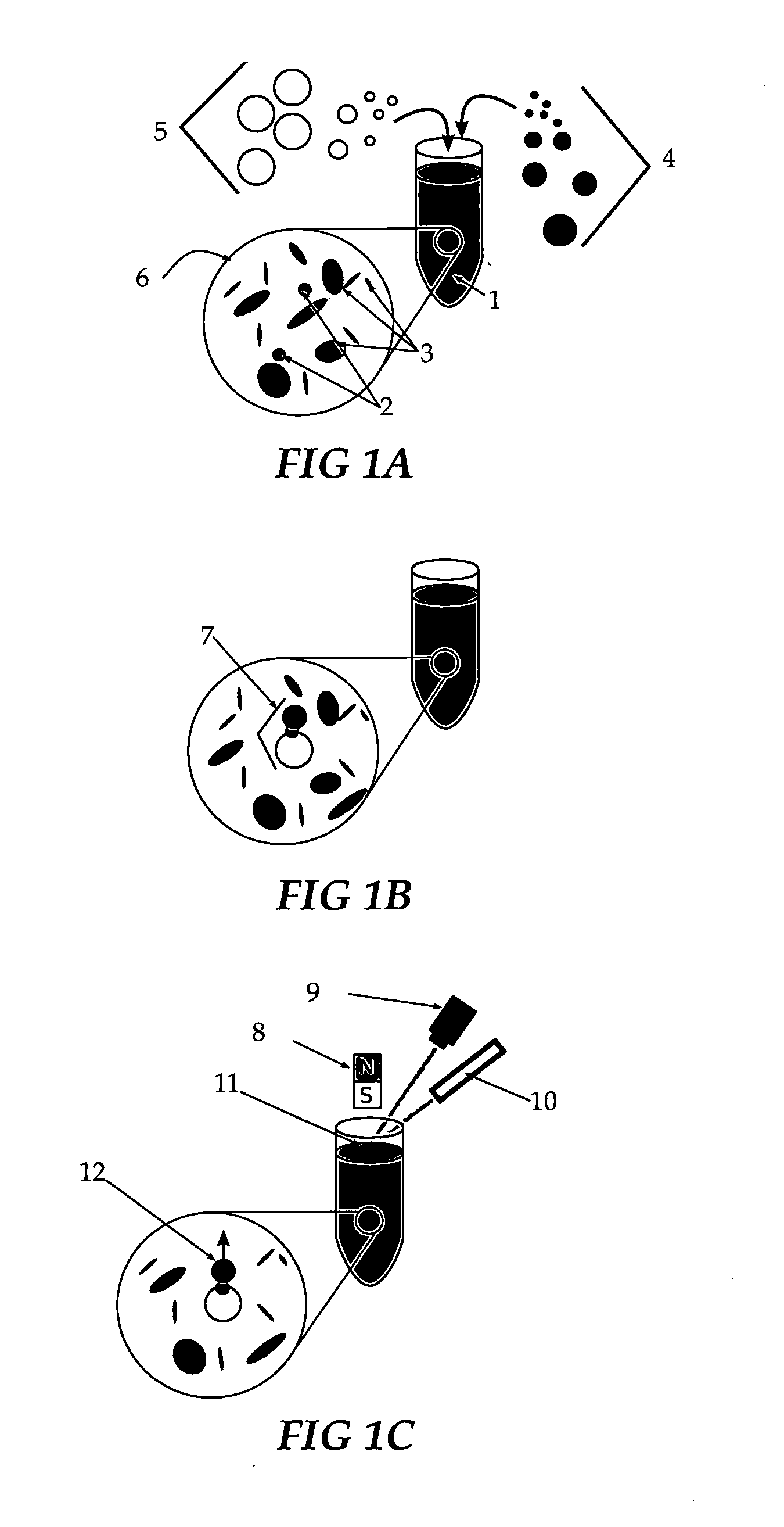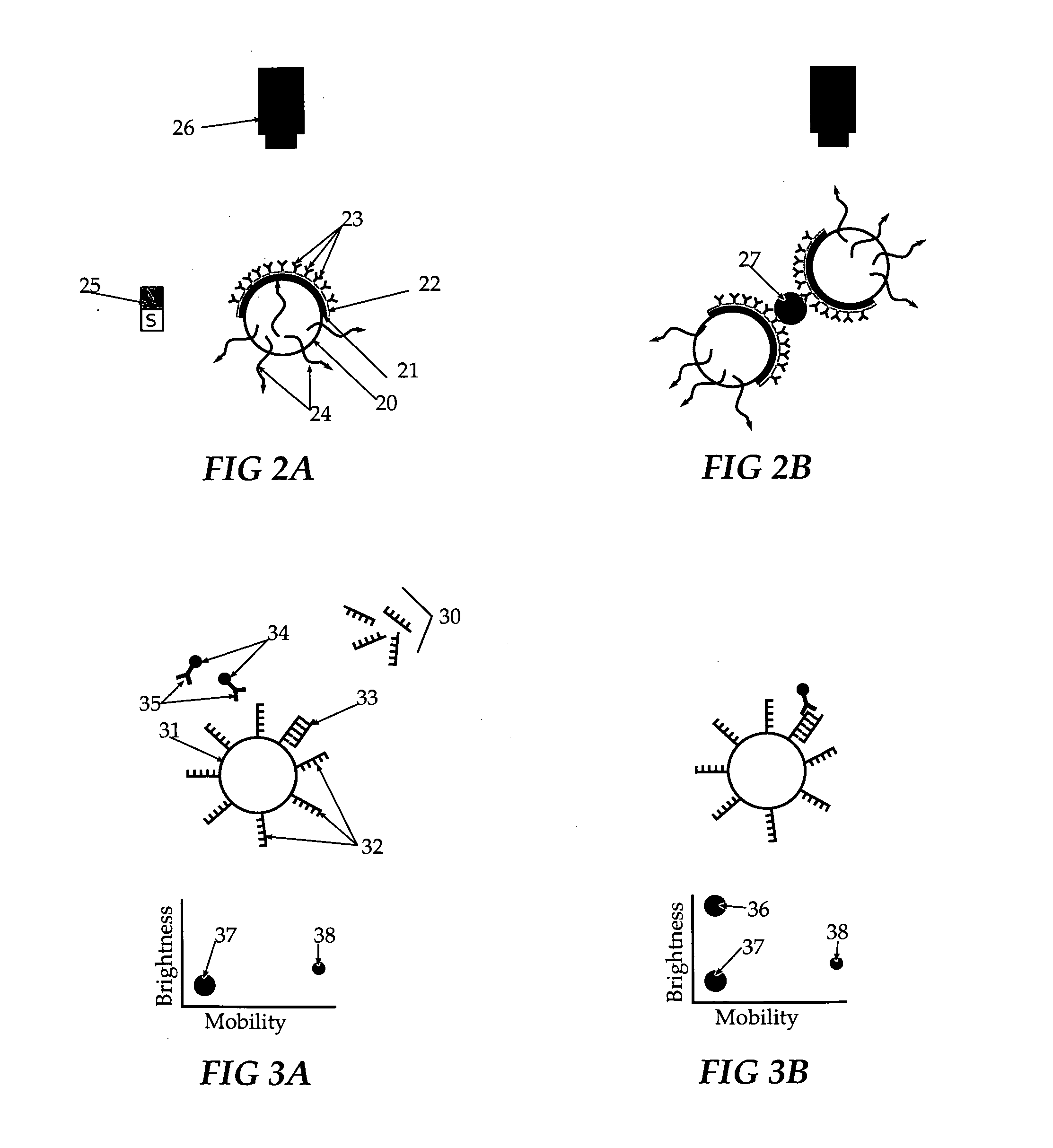Force Mediated Assays
a force-mediated assay and force-mediated technology, applied in the field of chemical analysis, can solve the problems of not achieving the broad utilization of solid-phase binding assays, not teaching the use of particle tracking in detecting or quantifying analytes in any way, and lack of sensitivity, so as to achieve enhanced sensitivity and convenience of use
- Summary
- Abstract
- Description
- Claims
- Application Information
AI Technical Summary
Benefits of technology
Problems solved by technology
Method used
Image
Examples
example 1
[0050]Retroreflector cubes, five microns on a side, are fabricated as transparent polyimide cubes, are coated with gold on three mutually perpendicular surfaces, and are suspended into solution containing an opacifying substance which absorbs visible wavelengths of light. The gold surface is functionalized with dithiobis succinimide propionate molecules which bind to antibodies to a specific pathogen. A set of buoyant silica microbubbles with secondary antibodies to this pathogen is placed into the solution and binds to the cubes when the agent is present. The microbubbles are floated up to the top of the solution to an observation point and appear bright if they have a retroreflector bound to them by the pathogen.
example 2
[0051]Fluorescent beads are placed on a surface and coated sequentially with Permalloy (or another magnetic film) and gold so that only about one hemisphere is optically opaque (Janus particles). The beads are placed in solution and the gold surfaces are functionalized with antibodies to a specific agent. When a magnetic field is applied, the spheres all orient themselves in the same direction so that the fluorescent material is blocked by the opaque layers from the excitation source and the solution looks dark. The particles are placed into a sample and are allowed to capture the agent. The agent bridges two spheres in such a way that they can no longer be oriented by the magnetic field to block the excitation radiation. The solution begins to emit a fluorescent signal that increases with the number of Janus particles no longer aligning with the magnetic field.
example 3
[0052]Gold flakes (square or rectangular sheets of gold) with a magnetic core are suspended into solution and align when a magnetic field is applied so that they reflect light into a sensor when the solution is illuminated. The gold surfaces are decorated with antibodies to an agent. When the agent is present, the flakes can bind to spherical magnetic beads also coated with antibodies. When the beads attach, the flakes can no longer align themselves to the magnetic field and brightness is reduced.
PUM
 Login to View More
Login to View More Abstract
Description
Claims
Application Information
 Login to View More
Login to View More - R&D
- Intellectual Property
- Life Sciences
- Materials
- Tech Scout
- Unparalleled Data Quality
- Higher Quality Content
- 60% Fewer Hallucinations
Browse by: Latest US Patents, China's latest patents, Technical Efficacy Thesaurus, Application Domain, Technology Topic, Popular Technical Reports.
© 2025 PatSnap. All rights reserved.Legal|Privacy policy|Modern Slavery Act Transparency Statement|Sitemap|About US| Contact US: help@patsnap.com



